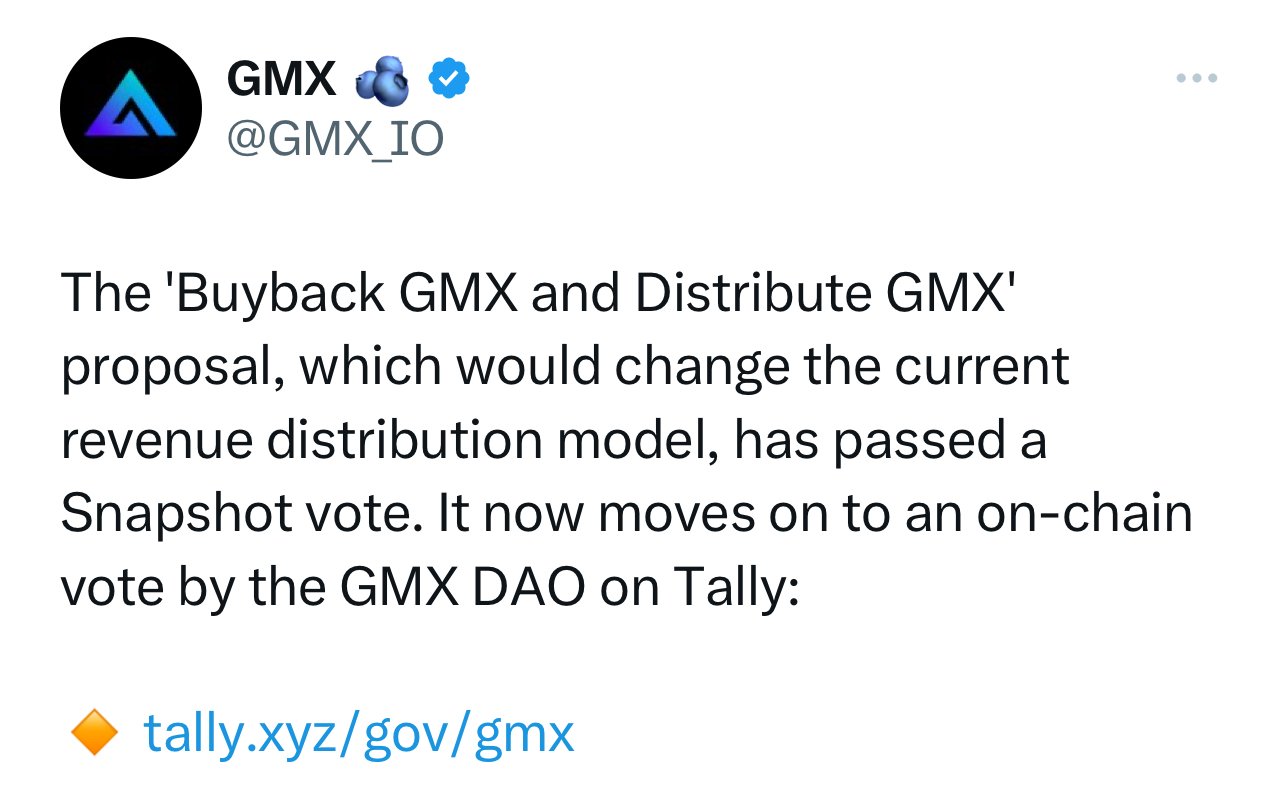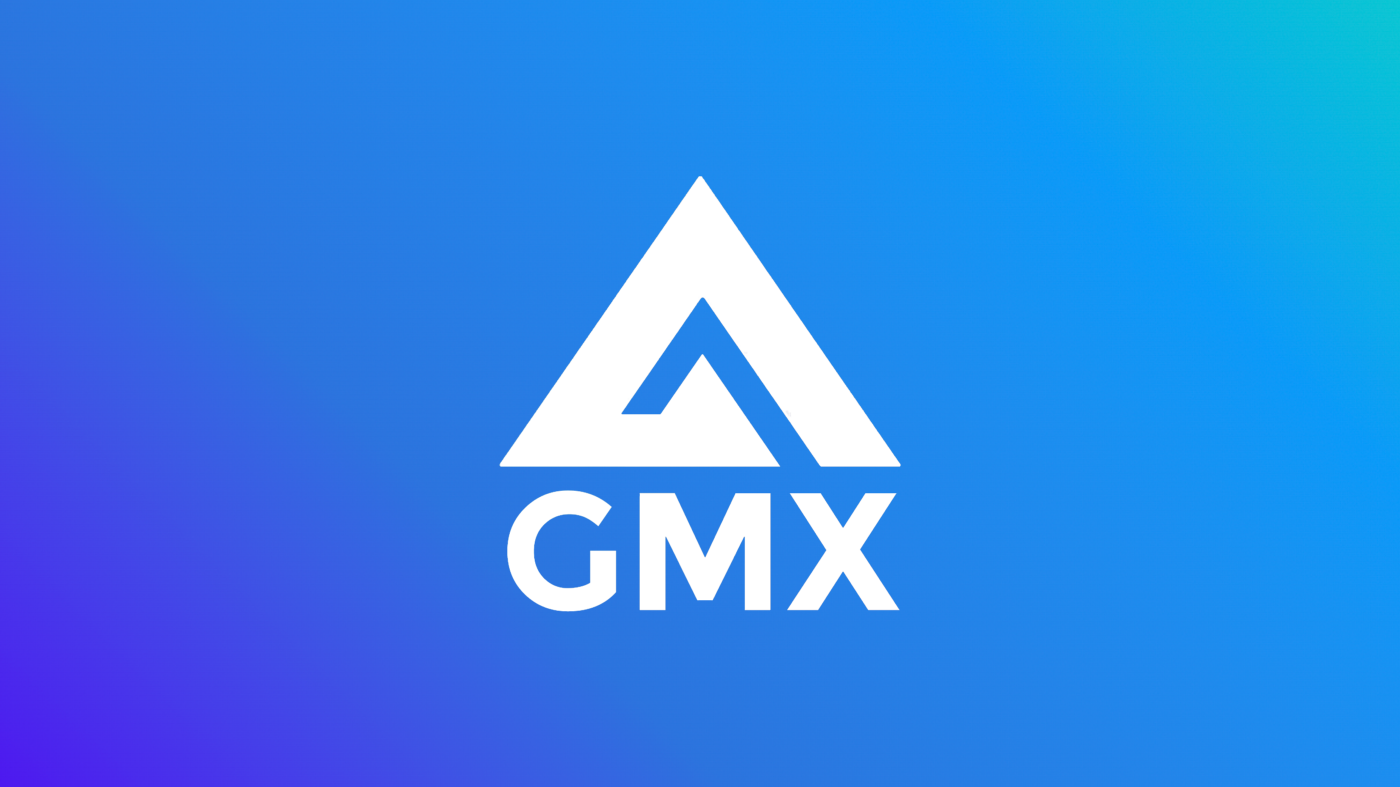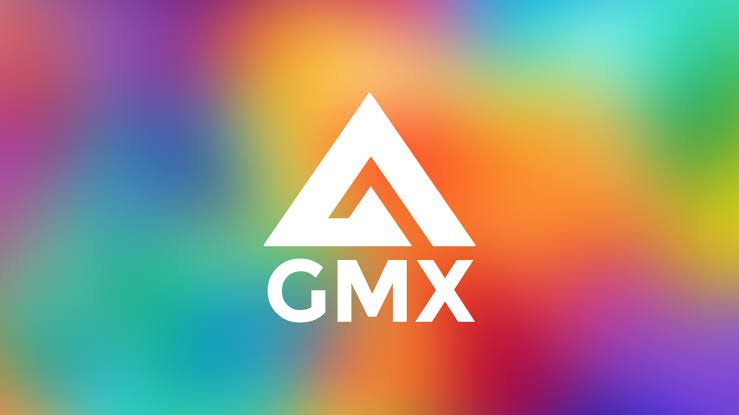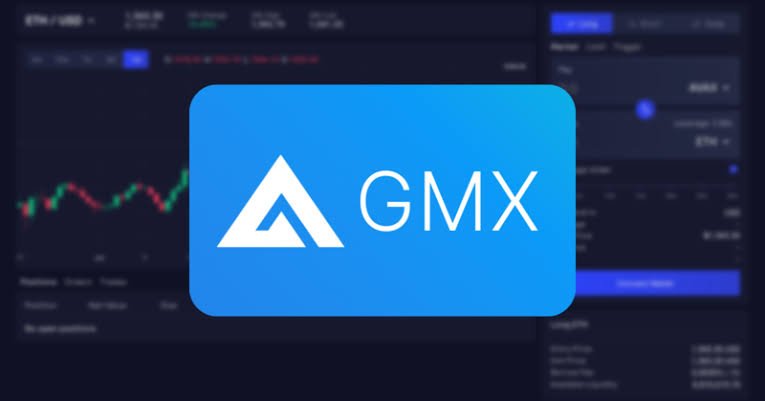GMX, an on-chain perpetual and spot exchange, has announced that a proposal to alter its revenue distribution model has advanced to the on-chain voting stage. This development has been reported by TurkishNY Radio, bringing critical news to the forefront. The new GMX revenue model aims to enhance the long-term value of the GMX token and significantly impact how the platform operates.
According to reports, the proposal, dubbed “Buyback GMX and Distribute GMX,” aims to enhance the long-term value of the GMX token. The announcement was made on July 31, with the new GMX revenue model promising to shift the dynamics of the platform’s revenue distribution.

Currently, the GMX revenue model operates on a system that involves buying back and distributing Ethereum (ETH). However, the new proposal seeks to replace this with a system where GMX tokens are bought back and distributed instead. This change is expected to boost the native token’s value while preserving real-yield advantages for users.
The snapshot vote for the new GMX revenue model proposal has already passed, leading to the next critical stage – on-chain voting. The GMX DAO community now has until August 4 to either approve or reject this proposal. If approved, the current “buyback ETH and distribute ETH” GMX revenue model will be replaced with the new “buyback GMX and distribute GMX” model.
GMX Revenue Model Conversion Options
One of the key aspects of the “Buyback GMX and Distribute GMX” proposal is the option for users to convert the distributed GMX tokens back to ETH if they choose. This flexibility means that network fees will be stored in GMX and distributed in the same token, but users will still have the option to convert directly to ETH if desired.

The details of the proposal, as reported by TurkishNY Radio, outline that the buyback contract will allocate one-seventh of the fees towards purchasing GMX tokens each day over a seven-day period. The GMX revenue model specifies that the buyback price will be determined based on GMX’s Chainlink oracle price on both the Arbitrum and Avalanche networks. Additionally, the buyback contract will enforce a premium on the revenue model, gradually increasing from 0% to 5% over the week.
GMX’s innovative trading model allows liquidity providers to earn fees from spreads, funding fees, and liquidations. According to DeFiLlama, GMX ranks as the 45th largest chain by revenue and fees, with competitors such as dYdX and Jupiter Perpetual Exchange closely trailing. This change in the GMX revenue model is expected to have a significant impact on its competitive position in the market.
The GMX revenue model proposal includes several key features designed to enhance the platform’s overall value and user experience. By shifting to a GMX-based revenue distribution, the platform aims to create a more robust and sustainable ecosystem. TurkishNY Radio points out that this move could attract more users and liquidity providers to the platform, further solidifying GMX’s position in the decentralized finance space.
Moreover, the GMX revenue model proposal ensures that network fees will be stored in GMX and distributed in the same token. This approach not only boosts the value of the GMX token but also offers users the flexibility to convert their GMX tokens to ETH if they prefer.
The GMX revenue model also introduces a premium on the buyback contract, gradually increasing from 0% to 5% over a week. This premium is intended to enhance the revenue model’s effectiveness and ensure a steady increase in the GMX token’s value. According to intricate research, this feature is expected to incentivize more users to participate in the GMX ecosystem and contribute to its growth.

The GMX revenue model proposal is part of a broader strategy to improve the platform’s long-term sustainability and value. By adopting a GMX-based revenue distribution, the platform aims to align its interests with those of its users and create a more resilient and valuable ecosystem. This approach is expected to generate positive feedback from the community and drive further adoption of the GMX platform.
Conclusion: GMX Revenue Model Set to Transform
As the GMX community eagerly awaits the outcome of the on-chain vote, the implications of this proposal are profound. If the “Buyback GMX and Distribute GMX” model is approved, it will mark a significant shift in how the platform operates and distributes revenue. This new GMX revenue model is designed not only to increase the value of the GMX token but also to offer users greater flexibility and real-yield benefits. The on-chain vote, which concludes on August 4, will ultimately determine the future of GMX’s revenue distribution strategy.
As the situation develops, the insights and reporting from TurkishNY Radio will remain crucial for those following this groundbreaking change in the GMX platform. In summary, the GMX revenue model proposal represents a pivotal moment for the platform and its users. With the on-chain vote now in progress, the decentralized finance community watches closely to see if the “Buyback GMX and Distribute GMX” model will usher in a new era of value and innovation for GMX.








